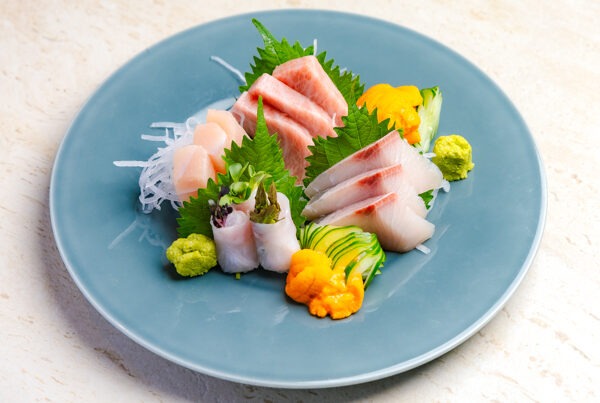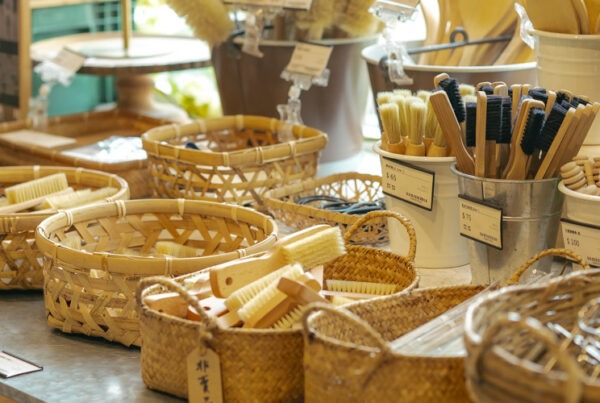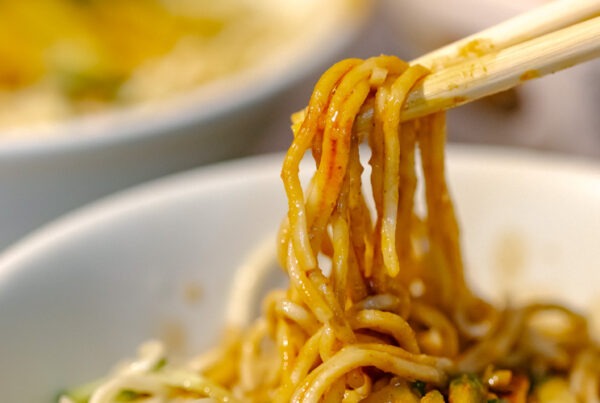The Most Historic – and Fun – of Tainan City’s Old Streets
TEXT / RICK CHARETTE
PHOTOS / VISION
Tainan City is the garden where Taiwan’s modern era took root. This was the island’s first urban settlement, established by the colonizing Dutch in 1624, who were driven out decades later. Glorious Tainan thereafter served as Taiwan’s Chinese imperial capital for over two centuries. Economic activity shifted to the north in the 20th century, leaving priceless architectural heritage intact, and recent decades have brought an economic and cultural renaissance bloom.
Shennong Street
The place name “Tainan” translates as “Tai(wan) South.” It has long been the south’s cultural heart, while the powerhouse port city of Kaohsiung, a short drive further down-coast, is the economic/industrial heart. And yes, “Taipei,” Taiwan’s capital, is “Tai(wan) North.”
A most stimulating place to embark on a day’s walking tour of the old Tainan city core is cozy Shennong Street, stacked with long and narrow historic two-story shophouse buildings hosting cultural-creative shops (recommended for souvenir hunting, collectively brimful with handmade creations), artist studios, as well as quaint compact cafés, teahouses, bars, and eateries – plus a smattering of homestay operations. Adding to the old-world ambience and the tight-knit community feel are two city-designated historic sites, Jinhua Temple and Yaowang Temple. Many of the shophouse structures date to the late Qing Dynasty (latter 1800s) and Japanese colonial (1895-1945) periods.

Shift down to your slowest walking gear to allow time for admiration of the eclectic yesteryear façades, each a distinguishing artistic expression; many have been further prinked and personalized to announce the new 21st-century ventures now moved in. The artery, which is just a few hundred meters long, is especially busy and alluring after the sun sets when retro-style lamps introduce an ethereal night-time glow that evokes the settings travelers rejoice in ambling the old quarters of Nice, Bordeaux, and other romance-tale European destinations.


Shennong Street intersects with a major north-south thoroughfare, Hai’an Road, on its east end. “Hai’an” translates as “sea tranquility,” a clue to the fact that the coastline once ran alongside. The land under Shennong Street stretched out into the water, pier-like, flanked by short transport canals. Goods were brought in by boat through the canal-facing backs of the shophouses. Shops were in the front section, facing the street, storage was above on the second floor, and family quarters were toward the rear. Fore and aft edifice sections were often divided by a sky well, a courtyard area allowing in sunlight. Looking at Google Maps, you can see how silting has pushed the Taiwan Strait kilometers to the west; the nearby Anping Canal is a vestige of the long-vanished harbor area.


From the eastern end of Shennong Street, just cross Hai’an Road to get to the area introduced next.
Guohua Street
Just to the east of Shennong Street is an aromatic and forever-abuzz timeless neighborhood where you can dive headlong into traditional local Tainan living as pursued generation after generation back into imperial times. Browse heritage markets and feast on some of the pantheon of snacking classics the city has gifted to the global gourmand table. The enclave is fixed on north-south Guohua Street (Section 3), a narrow old-ways market street teeming with family-run operations that spill right out onto the street. Guohua parallels the aforementioned Hai’an Street, one compact block to its east.
Cross Hai’an from Shennong Street and you enter the excitingly cacophonous Shuixian Temple Market, among the city’s oldest. The covered forest of stalls within surrounds the venerable Shuixian Temple, established in 1703 – remember, this spot was once at the harborfront – with a cadre of deities especially dear to traders, seafarers, and fisherfolk resident within, specialist protectors against water-related disaster. Tainan City tourism authorities have referred to this market as “Tainan’s Kitchen,” high praise indeed given the fact this city is home to a number of Taiwan’s most-cherished traditional markets.

Among the most celebrated of the many long-in-place family-run operations in the market is the Bao Lai Xiang bakery. It’s been making palates happy for over seven decades now, a seller of peng cakes and other old-time baked yummies Tainan is known for. Peng cakes are puffed-up pastries with a very thin outer layer that is crunchy and crumbly and, within, a “hollow” inside the rounded top and caramelized brown sugar at the bottom. The Tainan region is a flourishing sugarcane cultivation area, its heyday being the late Qing imperial era and the Japanese period of rule.

Another market with a legitimate claim to being “Tainan’s Kitchen” is close nearby – Yongle Market, at the Guohua Street/Minzu Road corner. Like our first-visited market, this labyrinth stuffed with a hundred-plus operators is a covered operation. While sophisticated Taipei is known for its legions of more upscale restaurants, Tainan is known around Taiwan as the island’s creative kitchen for xiaochi or “little eats”– i.e., fresh-made snacking delicacies. Though even busier with tourists than Shuixian Temple Market, this remains a true food bazaar serving locals – you’ll even see regulars wading slowly through the crowded aisles on their scooters, purchases dangling from handlebars.

Directly across Guohua Street from Yongle Market at the Guohua/Minzu intersection is one of Tainan’s best-known purveyors of Taiwan-style spring rolls, Jinde Spring Rolls. The founder ran a stall nearby selling cold drinks in the 1950s and started making spring rolls in 1954, seeing the steady demand especially during the springtime Tomb Sweeping Festival. The move to this location was made in 1966. Jinde’s soft wrap-skins are lightly pan-fried; the filling consists of cabbage, shrimp, pork, dried tofu, egg, beans, garlic, coriander, peanut powder, and sugar.

Just a couple doors down along Guohua Street is Fu Sheng Hao Rice Pudding, a household name in Tainan, established in 1947. Taiwan’s iconic savory rice pudding is known as wagui, using the Taiwanese pronunciation, literally “bowl cake.” Inside a bowl of steamed sticky rice paste are tasty “hidden treasures.” Inside Fu Sheng Hao’s fresh-crafted version, your key discoveries will be shrimp and ground pork. The mixing in of soy sauce gives it a color darker than found elsewhere.

Sharp-eyed readers will have noticed that shrimp featured in the signature delicacies prepared at the above two entries. Seafood is, indeed, a major player on the local snack stage; Tainan was the island’s major port through Taiwan’s imperial period, and fishing/aquaculture remain two important regional industries. A block-and-a-bit north along Guohua Street, in a quieter commercial/residential zone, is Qiu Family Squid Rice Noodles. The signature dish here is simple yet both delicious and filling – firm rice noodles in a light broth served with chunks of the freshest tender (no rubberiness) neritic squid and celery pieces.

{To get to the Anping Old Street area, take the Tainan Sightseeing Bus (www.tainansightseeing.com.tw) from the Shennong Street bus stop on Hai’an Road; get off at Anping Fisherman’s Wharf bus stop; walk north to Anping Road, then turn left.}
Anping Old Street
The Anping Old Street/Anping Fort area, perhaps Tainan’s most popular tourist draw, is due west of the Shennong Street/Guohua Street area, roughly a kilometer distant. Look down on it from the sky, i.e. using Google Maps Satellite View, and you’ll see expanses of water to its west, north, and south – the north swath consisting largely of aquaculture farms and mangrove wetlands.
When the Dutch launched Tainan they built a bastion, Fort Zeelandia, at the tip of a long spit of land that stretched into open water. This and several aligned silt islands running northward formed the outer edge of what was called the Inner Sea. Silting has now mostly swallowed this up, but vestiges remain.
The Anping Old Street neighborhood is the site of the first Dutch settlement, which formed beside the fort. At its heart is narrow Yanping Old Street, dubbed “Taiwan’s 1st Street” – the first-ever commercial street to form. The quarter’s brick- and stone-paved lanes are thronged with tourist-focused eateries and sellers of handicrafts, many handmade.

While on your walkabout, keep an eye out for the priceless Anping collection of heritage “one-arm houses.” In times past, because of crowded conditions one arm of the traditional Chinese three-sided courtyard residences, called sanheyuan, was left off in homes here, creating a distinctive “L” shape. The family/altar room was in the main section and a bedroom and kitchen were in the arm.
When one’s tummy invariably sets to rumbling for attention, here are a couple of Anping foodie options:
Deyi Shrimp Biscuits creates big, thick, crispy shrimp biscuits in a diversity of flavors; this is a retail enterprise specializing in souvenir purchases, though you can also eat hot and fresh on the spot. Opened in 1971, the operator family proudly uses only natural ingredients, eschewing preservatives and artificial additives. Shrimp biscuits are a fried treat, and great care is taken here to make munchies free of the oiliness often encountered elsewhere with fresh-made versions (it also now has baked editions). They’re crafted with shrimp paste, egg white, corn flour, sugar, and seasonings. Only local wild shrimp from the Anping area are used, no farmed products. Beyond original flavor, other options include spicy, black pepper, onion, laver, and more recently added Thai- and Mexican-style.

No, Taiwan’s famed beef noodles and delicious Tainan-style beef soup are not the same thing! Though the simplest of dishes, this beef soup packs tremendous flavor, and Anping’s A-Cai Beef Soup is one of the city’s go-to makers. Thin strips of the freshest raw beef produced in Tainan (slaughtered the same day) are dropped in steaming-hot beef and ginger broth, the broth doing the cooking on the spot. The meat is so melt-in-your-mouth tender and flavorful that no seasonings are required.

The site of Fort Zeelandia’s ruins is today called Anping Fort. Little of the fort remains – a good deal of the materials were used by the Chinese military to construct another popular and largely intact attraction nearby, the Eternal Golden Castle (another fort), in the 1870s. Your experience will be richly rewarding nonetheless, for there is good and ample English signage explaining the ruins and on-site digs, plus a small museum in a hilltop maritime-customs building built by the Japanese in the 1940s. Be sure to tackle the steep stairs in the maritime-customs tower, delivering you to sweeping views in all directions, including the now far-off coast.

About the author

Rick Charette
A Canadian, Rick has been resident in Taiwan almost continually since 1988. His book, article, and other writings, on Asian and North American destinations and subjects—encompassing travel, culture, history, business/economics—have been published widely overseas and in Taiwan. He has worked with National Geographic, Michelin, APA Insight Guides, and other Western groups internationally, and with many local publishers and central/city/county government bodies in Taiwan. Rick also handles a wide range of editorial and translation (from Mandarin Chinese) projects.












